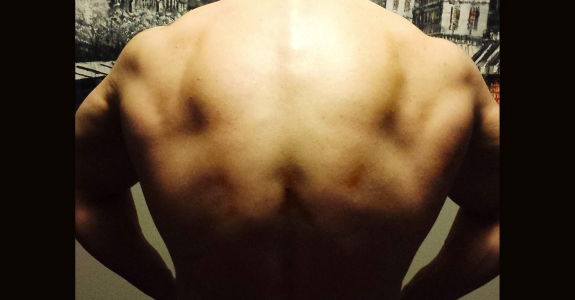SAVE YOUR JOINTS. BUILD STRONG MUSCLES.
“IS IT HARMFUL TO FULLY EXTEND MY JOINTS WHEN WEIGHT TRAINING?”
If you haven’t checked it out, I would highly recommend visiting http://www.strongfitnessmag.com/. This is a new Canadian magazine with great content and I currently serve on their health advisory board.
As a member of the advisory board, I was recently asked to answer the above question. Many experts support ALWAYS using a complete range of motion (ie. maximum joint flexion and extension to the point of joint “locking”), however, I recommend a more conditional approach.
WHEN TO LOCK OUT YOUR JOINTS:
*ATHLETES – Requiring specific athletic skill development at particular joints that involve maximum range of motion (ROM).
*POWER DEVELOPMENT – To develop maximum power in a muscle it should be taken through a complete range of motion. Have you ever noticed the flexibility of a power-lifter? It isn’t by accident that their hip and shoulder mobility is phenomenal.
*REHABILITATION – In most cases when recovering from an injury it is critical to ensure you develop maximum joint ROM (or to the best of your ability). Once this is achieved the advice I provide below becomes more relevant.
BENEFITS OF NOT LOCKING OUT YOUR JOINTS:
*AVOIDING WEAR AND TEAR – In the long term, avoiding joint “locking” with each rep of heavy resistance training will save your joint soft tissues. Think about it – when you are hanging from a pull-up at MAXIMUM extension what is maintaining your joint integrity? It is less muscle tendons and more so ligaments that hold the joint together. Likewise, at the top of a heavy squat when your knees are completely locked and extended are your quads engaged? For those with good balance the quads at least partially relax and forces are sent directly THROUGH the joint space (ie. cartilage compression).
*GOOD FORCES VS BAD FORCES – Research shows that our cartilage likes “normal” forces (think walking, lighter resistance training), but the wear of heavy resistance training over DECADES may prove harmful for cartilage (albeit great for bone density maintenance and muscle preservation). You may save your cartilage by slightly reducing your range of motion (by less than an inch) to avoid joint locking during heavier movements.
*HYPERTROPHY –By slightly (less than an inch) reducing your ROM you will not only promote joint health and longevity, but will also focus more tension on your working muscles. If you have not tried squatting, pressing, or performing pull-ups by reducing your ROM to avoid joint locking it will be surprising to feel the increased pump and burn the through working muscles. When joints do not fully extend, tension is kept on working muscles, thus avoiding the split second rest normally experienced at peak extension.
Ultimately your short and long-term goals will dictate how you train. Personally, my ultimate goal is to preserve my body and conditioning as long as possible. To do this, I must preserve joint integrity, which without a doubt requires healthy ligaments and cartilage. Since slightly reducing my ROM I not only have healthier joints, I am GROWING more muscle by focusing more tension on fibers during training sessions.
REMEMBER: The difference in range of motion I am referring to is the fraction of an inch that separates “joint locking” from sustained muscle tension.




Recent Comments